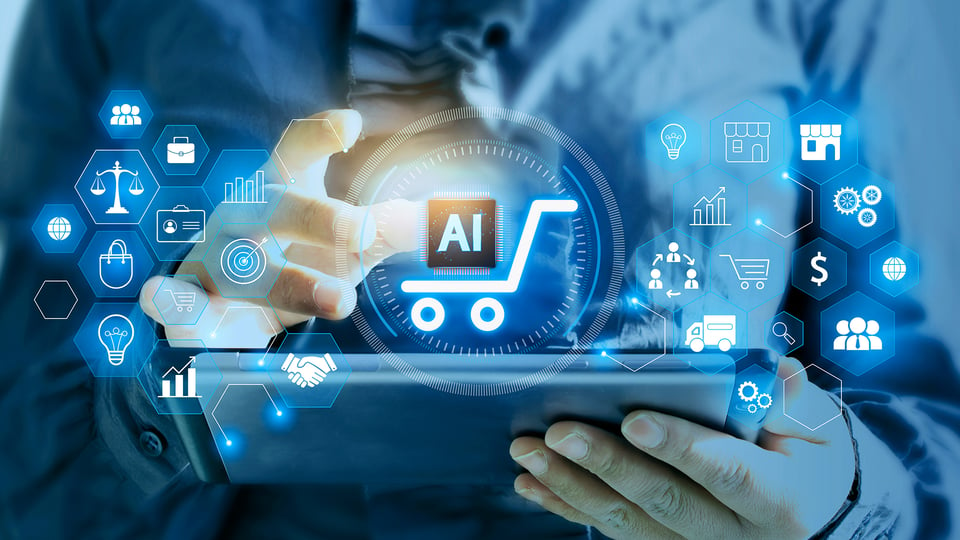How AI is shaping the future of online shopping

As we delve deeper into 2024, the ecommerce landscape is undergoing a remarkable transformation fueled by advancements in artificial intelligence (AI). From enhancing customer experiences to streamlining operations, AI is reshaping how businesses engage with consumers and manage their online platforms. This blog post explores the latest trends and applications of AI in ecommerce, highlighting its profound impact on the industry.
1. Personalization at scale
One of the most significant ways AI is transforming ecommerce is through personalized shopping experiences. AI algorithms analyze vast amounts of data, including browsing behavior, purchase history, and demographic information, to deliver tailored recommendations. According to recent studies, 80% of consumers are more likely to make a purchase when they receive personalized recommendations.
Example: Companies like Amazon and Netflix have successfully utilized AI to suggest products and content, significantly boosting their sales and user engagement.
2. Enhanced customer support with AI chatbots
AI-powered chatbots are revolutionizing customer service in ecommerce. These virtual assistants can handle inquiries 24/7, providing instant responses to common questions and guiding customers through their shopping journey. A report indicates that over 60% of consumers prefer using chatbots for quick answers, highlighting their effectiveness in improving customer satisfaction.
3. Predictive analytics for inventory management
AI is also playing a crucial role in inventory management. By leveraging predictive analytics, businesses can forecast demand more accurately, reducing overstock and stockouts. This capability is particularly beneficial during peak shopping seasons, where demand can fluctuate dramatically. Research shows that companies using AI for demand forecasting can reduce inventory costs by up to 25%.
Example: Retailers like Walmart are employing AI-driven analytics to optimize their supply chains, ensuring that products are available when and where customers want them.
4. Visual search technology
The rise of visual search technology is another exciting development in AI for ecommerce. This technology allows consumers to search for products by uploading images or taking photos with their smartphones. According to industry reports, over 30% of consumers prefer visual search over traditional text-based search, as it simplifies the shopping process.
Example: Platforms like Pinterest and Google Lens are leading the way in visual search, enabling users to discover products effortlessly.
5. Fraud detection and prevention
As ecommerce grows, so does the risk of fraud. AI is becoming essential in detecting and preventing fraudulent activities. Advanced algorithms can analyze transaction patterns in real-time, identifying anomalies that may indicate fraud. Studies show that businesses using AI for fraud detection can reduce fraudulent transactions by 50% or more.
Example: Companies like PayPal and Stripe utilize AI to monitor transactions and flag suspicious activities, enhancing security for both merchants and consumers.
6. Dynamic pricing strategies
AI enables dynamic pricing strategies that adjust prices in real-time based on various factors, including demand, competition, and consumer behavior. This approach helps businesses maximize profits while remaining competitive. According to market analysis, up to 40% of retailers are expected to adopt dynamic pricing models by the end of 2024.
Example: Airlines and hotel booking platforms have long used dynamic pricing, and now ecommerce retailers are following suit to optimize their pricing strategies.
7. AI-Driven content creation
Generative AI is making waves in content creation for ecommerce. From product descriptions to marketing copy, AI tools can generate high-quality content quickly and efficiently. This capability not only saves time but also ensures consistency across various platforms. Reports suggest that businesses leveraging AI for content creation can see productivity increases of up to 30%.
Example: Brands like Shopify are integrating AI tools that assist merchants in creating engaging product descriptions automatically.
8. Voice commerce integration
With the increasing popularity of voice-activated devices, voice commerce is becoming a vital aspect of ecommerce. AI-powered voice assistants like Amazon’s Alexa and Google Assistant enable consumers to make purchases using voice commands, enhancing convenience. A recent survey indicates that over 20% of consumers have made a purchase using voice technology, a trend expected to grow in the coming years.
Conclusion
The integration of AI in ecommerce is not just a trend; it’s a fundamental shift that is redefining the industry. As businesses continue to adopt these technologies, they can expect improved customer experiences, enhanced operational efficiencies, and increased profitability.
In 2024 and beyond, the future of ecommerce will be characterized by a seamless blend of technology and consumer-centric strategies, driven by the power of artificial intelligence. Companies that embrace these changes will not only survive but thrive in the ever-evolving digital marketplace.
As we look ahead, staying informed about the latest AI advancements and their applications will be crucial for businesses aiming to lead in the ecommerce space.





